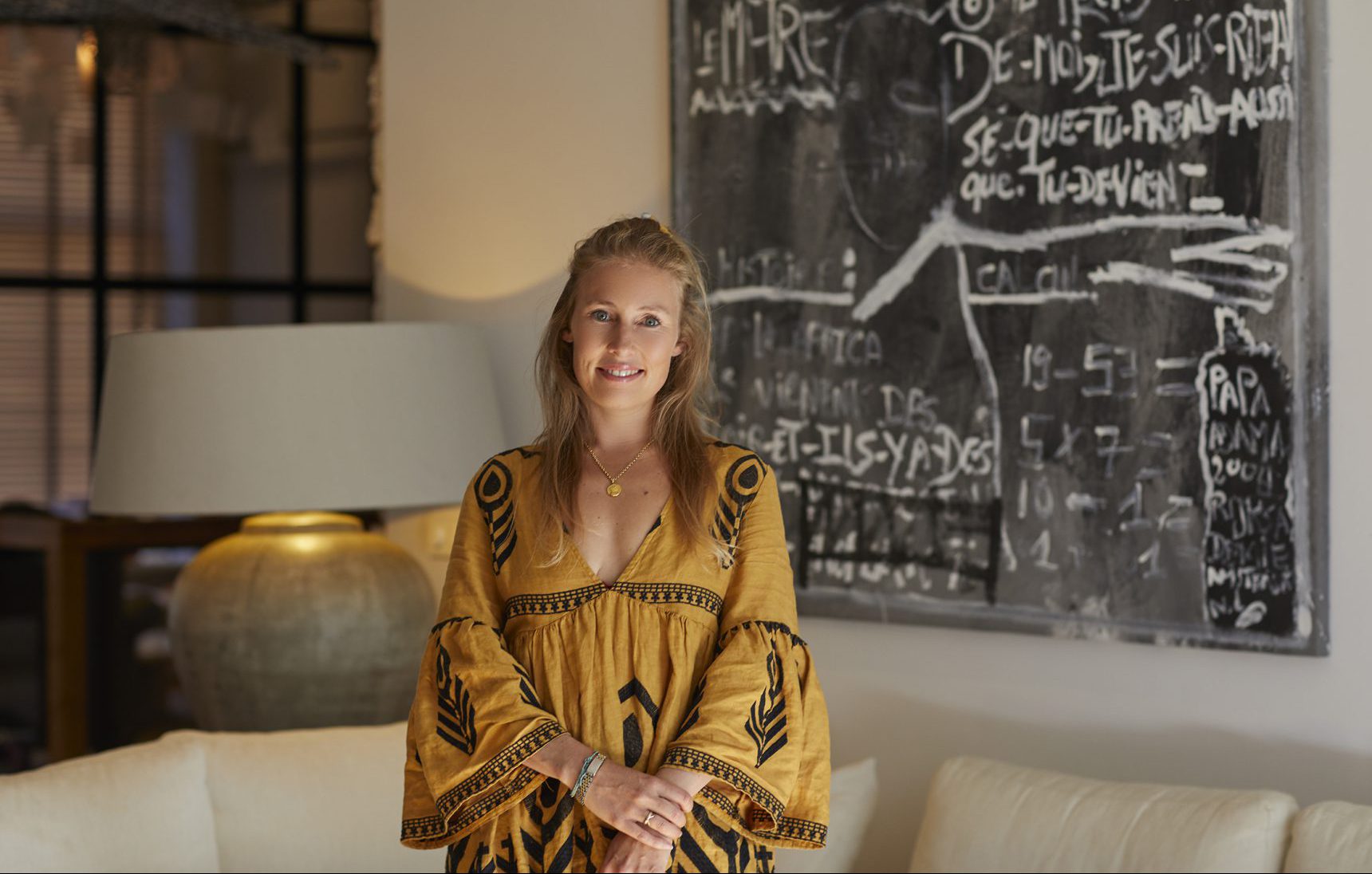Female tech fanatic, successful entrepreneur and award winner Thalita van Ogtrop, has many reasons to be proud. Six years ago, she founded The Next Closet, the first digital platforms for second-hand designer clothing in the Netherlands. Earlier this month, Thalita was praised with the prestige LOEY Talent Award for her innovative work and leadership. In her majestic home in the heart of Amsterdam, we sat down to discuss current trends, and her thoughts on how technology can play a role towards creating a more sustainable cycle.
“I wanted to create a super easy service where people could give their designer clothing a new lease of life”


What did you want to create when you started The Next Closet six years ago?
First of all, I wanted to create a super easy service where people could give their second-hand designer clothing a new lease of life. In addition, I wanted to create an awareness in which people come to understand that there’s value in their closet, and if they’re buying new items, to go for quality pieces that could be given a second life afterwards.
There are many industries that are a lot easier than the fashion industry. Where does your love for fashion come from?
In particular, it is the sustainable aspect that has attracted me to the fashion industry. When I was twenty-three, I did an internship at Gucci in Milan. What I saw there was how much time and energy goes into a collection and a fashion show, for it to be copied by H&M and Zara just three weeks later. I already thought that was very skewed, back then. So, in 2011, I helped set up The Circle Economy and discovered that there were actually very few circular examples or solutions that are commercial or really appealed to the mass. We all know the textile industry is, after oil, the second most polluting industry in the world. We really wanted to make an impact and thought: How cool if we could make second-hand clothing mainstream and thereby tackle and break through the entire textile chain. That’s the point of view from which I re-entered the fashion industry.
The demand for second-hand and vintage clothing is growing every year. The profits of large fast-fashion chains fell considerably in 2018 and it is expected that in the next 10 years the second-hand clothing market will surpass the fast-fashion industry. Did you ever think that this trend would expand at such a rapid pace?
I certainly expected that this would become a trend, but that it would go so fast and that you can no longer open a newspaper without seeing something about second-hand fashion, I would not have dared to dream. Of course, I am very happy about it. It is something super positive that we have more and more conscious consumers who think more and more about what they buy and where it comes from. The whole Marie Kondo-hype that is going on right now, minimalism is a big thing of course, vegetarian and vegan has never been this popular. So, despite the fact that the world is in a very bad state, we are also seeing a lot of positive trends.
LISTEN TO THE PODCAST IN DUTCH OR CONTINUE READING IN ENGLISH ⇓
But without a new purchase, eventually there won’t be any more second-hand clothing.
I think so much has been produced that we have enough to recycle and up-cycle for a very long time. I understand that, in the modern times of today, people also want new things and want to look beautiful, but what I hope is that if they buy new, they buy sustainably. That should become the norm.
“If you don’t wear it anymore, save it for later. Trends will always come back around.”

We often see that clothing, that is not or hardly worn, is being resold.
Fashion is really a cycle; you will see many trends coming back in the long run. What I recommend is that if you buy something new, buy timeless classics. Or, if you don’t wear it anymore, save it for later, trends will always come back around.
Technology has a major impact on our shopping behaviour. How can we use technology to promote a more sustainable lifestyle?
What recently introduced the sizing tool on our platform. Returns mainly arise because people cannot properly estimate their size and with second-hand-shopping it is even more difficult. As a result, we are not only dealing with returns, but also with the problem that people don’t want to buy at all, because they are afraid that it won’t fit. Luckily, technology can be very helpful in estimating what fits your body shape best. Of course, we also work with personalization with algorithms, which is guiding you through the second-hand mountain, especially because they are all unique pieces. But what I also find interesting is if we could create a tool with which you can index material types and describe why an item is a good buy, or not.
“I am extremely worried about what is currently going on, with the forest fires and tons of plastic in the oceans.”
On one hand we see more possibilities with innovative technology to feed our shopping addiction. On the other hand, we are becoming increasingly aware of the impact this has on our climate. How do you think this issue will develop in the future?
I think it should go hand in hand, I am extremely worried about what is currently going on, with the forest fires and tons of plastic in the oceans. On the other hand, I also realize that the ones that go really full-on vegan and sustainable is just a small percentage. We need to address the mass and I think technology will help us reach that bigger crowd, by making it extremely easy to resell and order your clothes. Then, second-hand could be treated in the same way as any other regular e-commerce player. I was actually talking about this with Prince Constantijn recently. He said: “Listen, it’s very simple, technology has to make the solar panels cheaper and get us things through wind energy.” That did restore my faith.
We see more and more online-only retailers making the switch to offline. Physical stores in the form of concept stores, combined with F&B, that focus on customer experience. Do you think that a similar concept is possible with second-hand and vintage clothing?
We are currently focussing on online, working on tech and algorithms. Nevertheless, I strongly believe in the combination of both online and offline. I see similar retailers like us in the US, who have all opened a physical vintage store. So, I do believe that online is still growing, but to combine that with a physical presence (also in second-hand retailing) really reinforces each other.
We are increasingly seeing brands joining forces in the form of a limited-edition capsule collection. From an entrepreneur’s point of view, what do you think are the benefits of this type of collaboration?
Commercially it’s very smart. As a consumer, you’ll have a natural response to ‘FOMO’ and scarcity. So from that point of view, I understand it very well. It’s sustainable on some level, because it is so sought after and also limited that this collection often sells out completely, so no leftover stock. Sabrina Meijer is of course a good example of this in the Netherlands.
Is there a company that you would really like to work with?
I think Stella McCartney is fantastic. Not only her beautiful collections, but her sustainable mission. It would be very cool to collaborate with her, for example in a way where we encourage people to sell all the Stella McCartney items that they have in their closet and no longer wear, through our platform. That would be truly amazing.
Credits: Photography by Louiza Mei King exclusively for AV-mag
